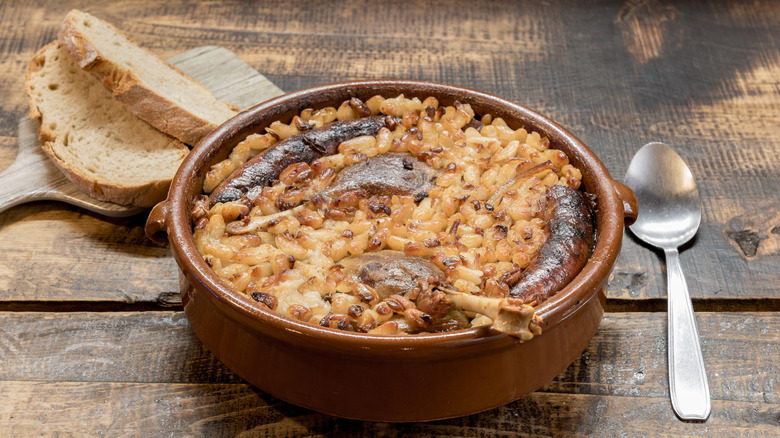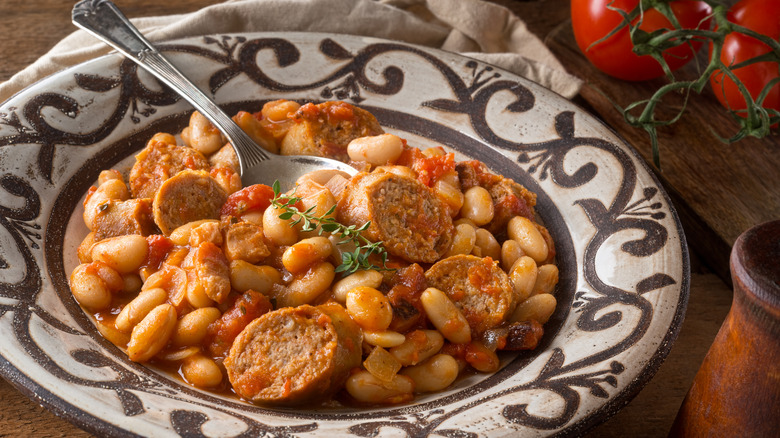The Common Ingredient That Is Never Used In Traditional Cassoulet
While French cuisine might call to mind delicate dishes served on white tablecloths in minuscule portions, regional cooking in France brings a lot of heft. Cassoulet, named for the cassole dish it's cooked in (via D'Artagnan), is a meat-and-beans stew that can take three days to cook (per Bon Appétit) and about three months to work off. According to the Toulouse Tourism board, cassoulet originated in southwestern France, but every town in the area has separate local lore and culinary variations of the dish, from the sausage-heavy cassoulet made in Toulouse, to the goose confit version preferred in Castelnaudary.
No matter how you make it, a traditional cassoulet recipe has an ingredient list that will lead to an extended stay at the grocery store as you hunt for Tarbais beans, duck leg confit, duck fat, and sausage, in addition to boilerplate stew fixins (per D'Artagnan). Each set of ingredients must then be cooked, first separately, then together, in a process that chef Dominique Ansel, via Saveur, once laid out in painful detail.
Part of what makes cassoulet so special is the golden brown crust that forms on top of the stew near the end of the process. But when asked what forms this crust, most home cooks would probably give the wrong answer.
Breadcrumbs don't belong on your cassoulet
At some point in cassoulet's long and illustrious history, people began topping it with breadcrumbs, a practice that is highly contested and often considered a shortcut for lazy cooks (via The Guardian). Some recipes, go so far as to suggest a top layer of Bisquick, which is definitely not Castelnaudary kosher, per Betty Crocker. While a little Panko won't hurt your dish, it's an aesthetic fix, and it won't achieve the same crispy, crunchy magic as those little old French grannies standing vigil over the stovetop.
Cassoulet's real crust is the result of natural fats and juices from the duck and sausage thickened with bean starches to form a thin layer, according to Kitchn. While baking in a Dutch oven, this crust must be broken, submerged in liquid, and allowed to reform at least three or four times in order to achieve maximum flavor and the ideal texture (per Delish). Per Serious Eats, it's not always easy to achieve this concentrated layer of proteins without the original tapered cassole dish, so adding store bought gelatin is another hack that doesn't involve using breadcrumbs.
It's a lot of work, but depending on your recipe portions, it could be the last dish you'll have to make all winter.

